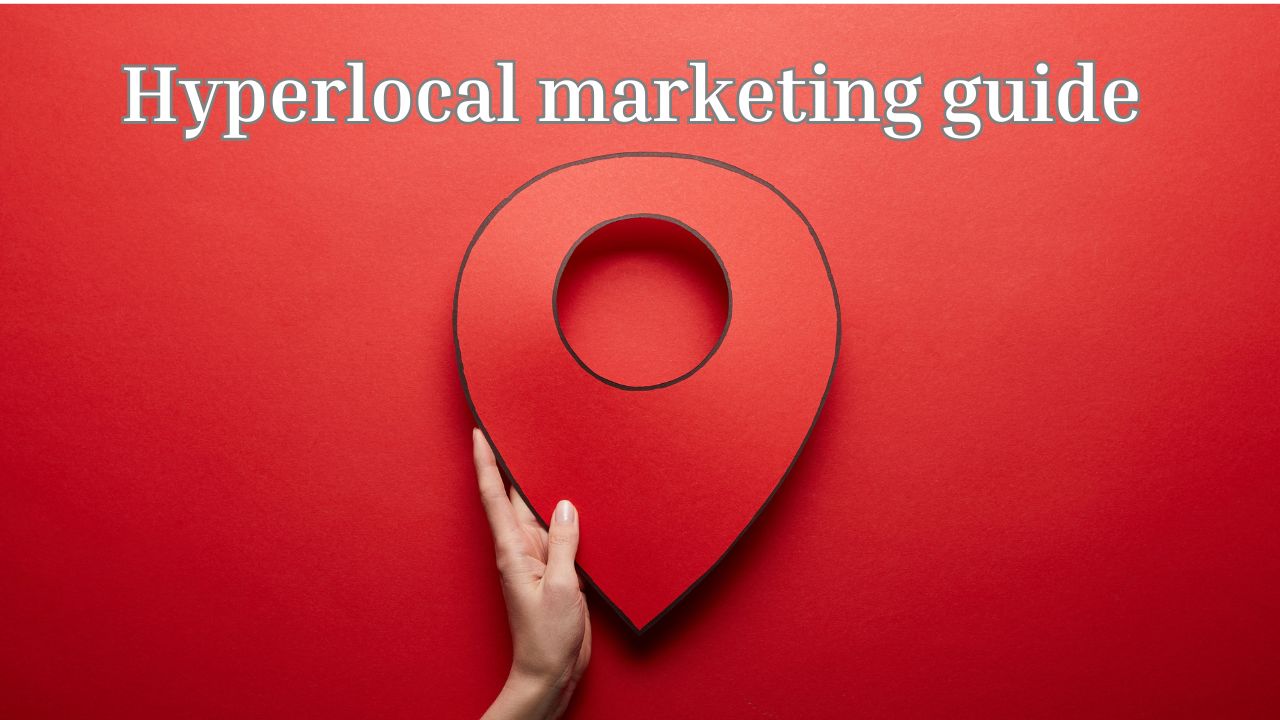Are you a local business owner? Have you been feeling like your marketing message is disappearing into the vast online world? It’s like trying to water a single plant with a firehose—a lot of effort for minimal results. You know your potential customers are out there, but how do you reach them without wasting your precious time and money?
Enter hyperlocal marketing.
In this guide, we’ll share the secrets of successful hyperlocal marketing, from mastering local SEO and optimizing your Google Business Profile to crafting engaging social media campaigns and maximizing the impact of hyperlocal ads.
Let’s trade in the firehose for a watering can and watch your business bloom.
Define hyperlocal
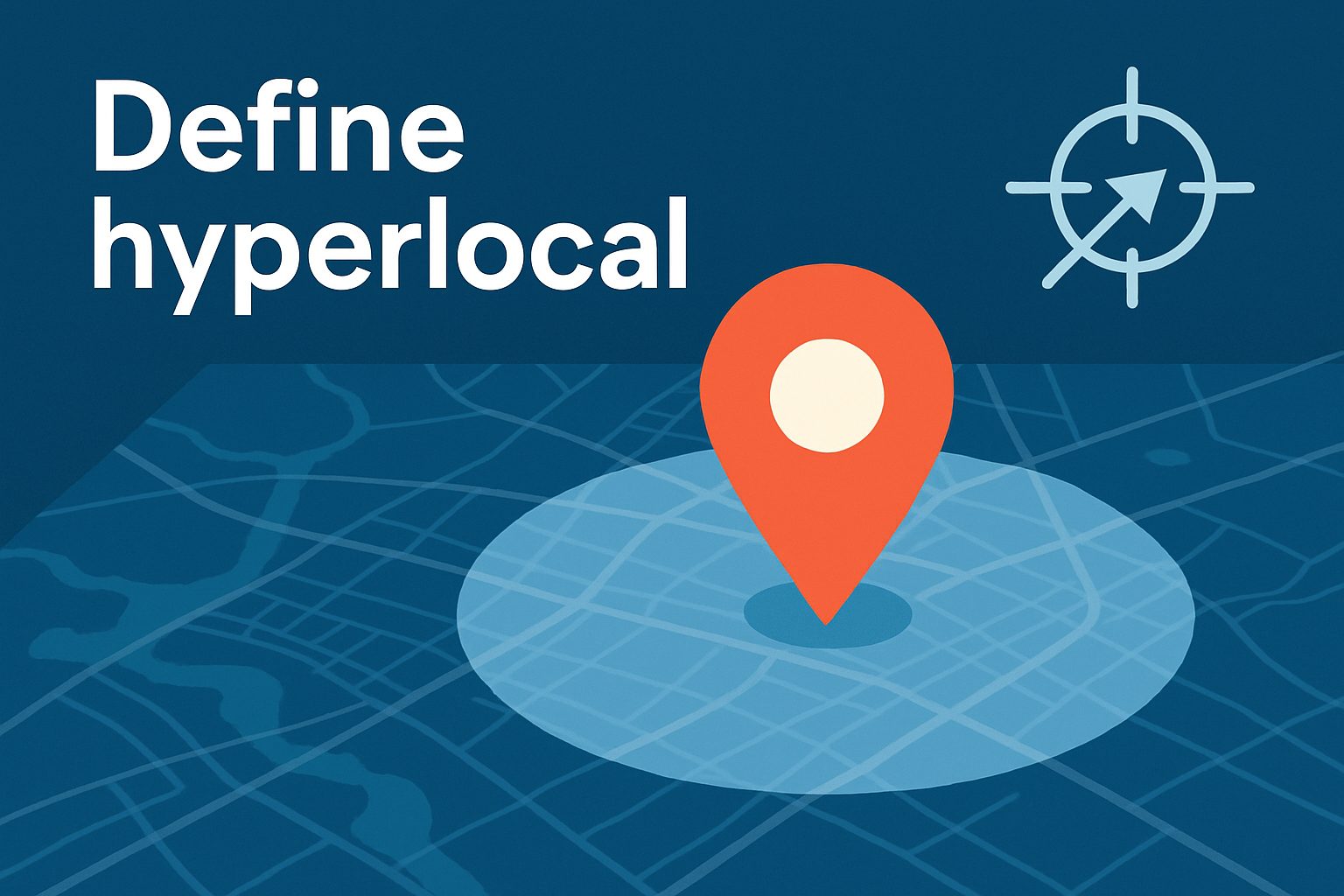
Hyperlocal marketing is a laser-focused approach that prioritizes a specific geographic location. Instead of casting a wide net and hoping for the best, it allows you to reach the right people, right where they live and work.
This means crafting hyperlocal marketing strategies that resonate with the unique needs and interests of your local community – your most relevant target audience.
By understanding your community and catering to their preferences, you can forge stronger relationships and establish your business as a trusted local resource.
How does hyperlocal targeting work?
![]()
Hyperlocal targeting goes beyond simple GPS coordinates. It uses a sophisticated mix of technologies:
-Geofencing: Virtual boundaries are drawn around specific locations. When a mobile device enters this zone, it triggers targeted ads or notifications.
-Beacon Technology: Small, low-energy Bluetooth devices placed in stores can interact with nearby smartphones, delivering highly contextual messages based on the user’s exact location within the store.
-IP Address Targeting: Though less precise, it can estimate a user’s location based on their internet connection.
-Wi-Fi Triangulation: By analyzing signals from multiple Wi-Fi hotspots, a device’s location can be pinpointed with surprising accuracy, even indoors.
Pro Tip:
Hyperlocal targeting can be complex, but it’s a powerful tool in this burgeoning market, projected to reach $7.0 billion by 2032.
Consider partnering with a digital marketing agency to maximize your results and ensure you’re reaching the right customers at the right time and place.
What to include in your hyperlocal marketing strategy
First things first, you need a strong online presence. That means having a well-designed website that showcases your products or services and is optimized for search engine optimization. This helps potential customers find you when they search online for businesses like yours in the area.
Next, claim and optimize your Google Business Profile. This free tool puts your business on the map – literally! – and helps you show up in local search results.
Finally, don’t forget about social media. Create a social media marketing strategy that includes engaging content, local promotions, and targeted ads to connect with your community.
Hyperlocal ads
By taking advantage of powerful geotargeting features, you can ensure your ads are seen by people in your area who are most likely to become your customers.
In the following sections, we’ll explore some effective strategies for making the most of your hyperlocal advertising efforts.
Hyperlocal mobile advertising
Did you know that the vast majority of mobile users rely on their smartphones to find local businesses? Our research found that 88% of consumers who do a local search on their smartphone visit or call a store within a day.
That’s why incorporating hyperlocal mobile advertising into your marketing strategy is a must. By delivering location-specific promotions directly to their devices, you can grab their attention when they’re most likely to engage with your business.
Facebook local awareness ads
When it comes to social media platforms, Facebook is a powerhouse for hyperlocal advertising. Their local awareness ads allow you to target users based on their proximity to your business, ensuring that your message reaches the right people at the right time.
To create effective Facebook local awareness ads, focus on crafting eye-catching visuals and ad copy that speaks directly to your local audience.
For example, if you run a local gym, you could show photos of your state-of-the-art equipment and friendly staff alongside a special introductory offer for residents in your area.
Hyperlocal advertising examples
Let’s look at three different scenarios:
1 – First, consider a local plumbing company that wants to attract more customers from their service area. They could allocate a portion of their advertising budget to Google Ads, targeting specific keywords related to common plumbing issues in their city.
By creating ads that highlight their 24/7 availability, transparent pricing, and excellent customer reviews, they’ll grab the attention of homeowners in need of plumbing services.
2 – Next, imagine a local bakery looking to increase foot traffic. They could use Facebook’s local awareness ads to promote a special “buy one, get one free” offer on their famous cupcakes to people within a 2-mile radius of their shop.
By featuring mouth-watering photos of their treats and emphasizing their use of locally-sourced ingredients, they’ll entice nearby residents to stop by and indulge in their delectable desserts.
3 – Similarly, if you run a local dental practice, you could use Facebook’s local awareness ads to promote a special offer for new patients within a 10-mile radius of your office.
By featuring glowing reviews from existing patients and emphasizing your state-of-the-art equipment and gentle approach, you’ll build trust and encourage potential patients to choose your practice for their dental needs.
Hyperlocal SEO
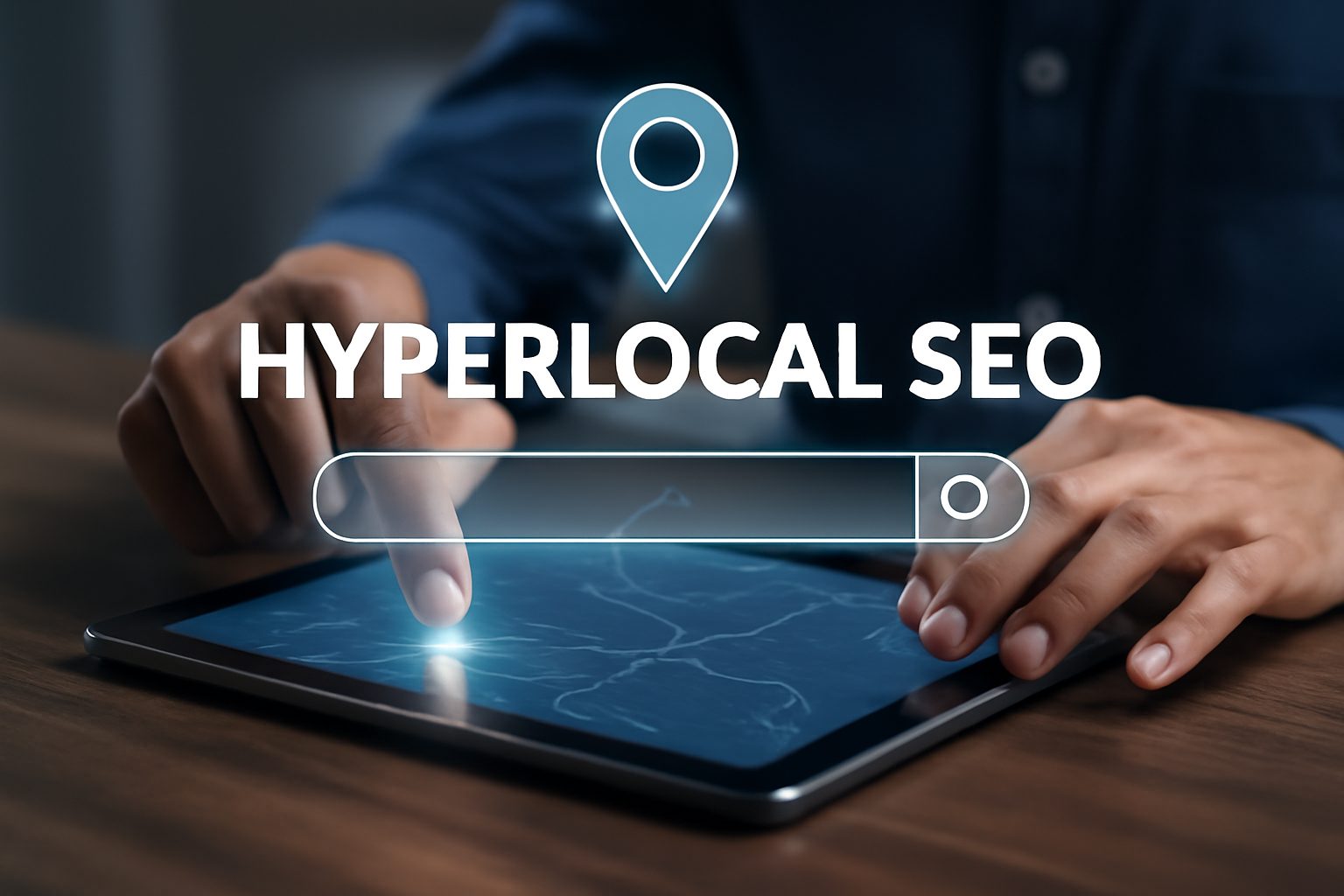
Think of someone searching for “pizza delivery” – they’re not interested in landing on Domino’s corporate page: they crave a local place to feed them now.
Individual geographic location pages are key to capturing that customer, and here’s how you can do it.
3 steps to boost local search rankings:
- Optimize for Search Engines: Dedicated, geographically focused pages send strong signals to Google, improving your search rankings.
- Target Your Hyperlocal Audience: Feature location-specific customer reviews, highlight neighborhood events, and tailor promotions.
- Maximize Your Advertising Budget: Location pages ensure your hyperlocal advertising efforts reach the right people.
We put these methods into practice for our own Landing Pages:
Example 1: Digital Marketing in North York:
As you can see below, our dedicated North York page consistently ranks on Google’s first page for searches like “digital marketing North York.”

Optimize Google Business Profile
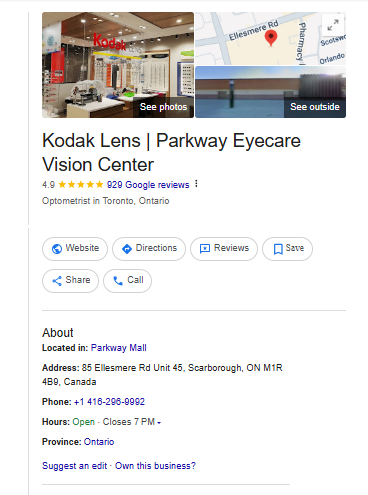
Your Google Business Profile (GBP) is your digital storefront on Google Search and Maps, making it a vital part of your hyperlocal marketing efforts.
When potential customers search for businesses like yours in your area, your GBP is often the first thing they see. A complete and accurate GBP listing helps you rank higher in local search results, making it easier for nearby customers to find you.
It also provides essential information like your business hours, address, contact information, and customer reviews. Moreover, the Q&A section of your GBP can be a valuable tool for engaging with potential customers and addressing their questions directly.
Pro Tip:
To learn more about optimizing your Google Business Profile for hyperlocal marketing success, check out our detailed guide here
Hyperlocal social media marketing
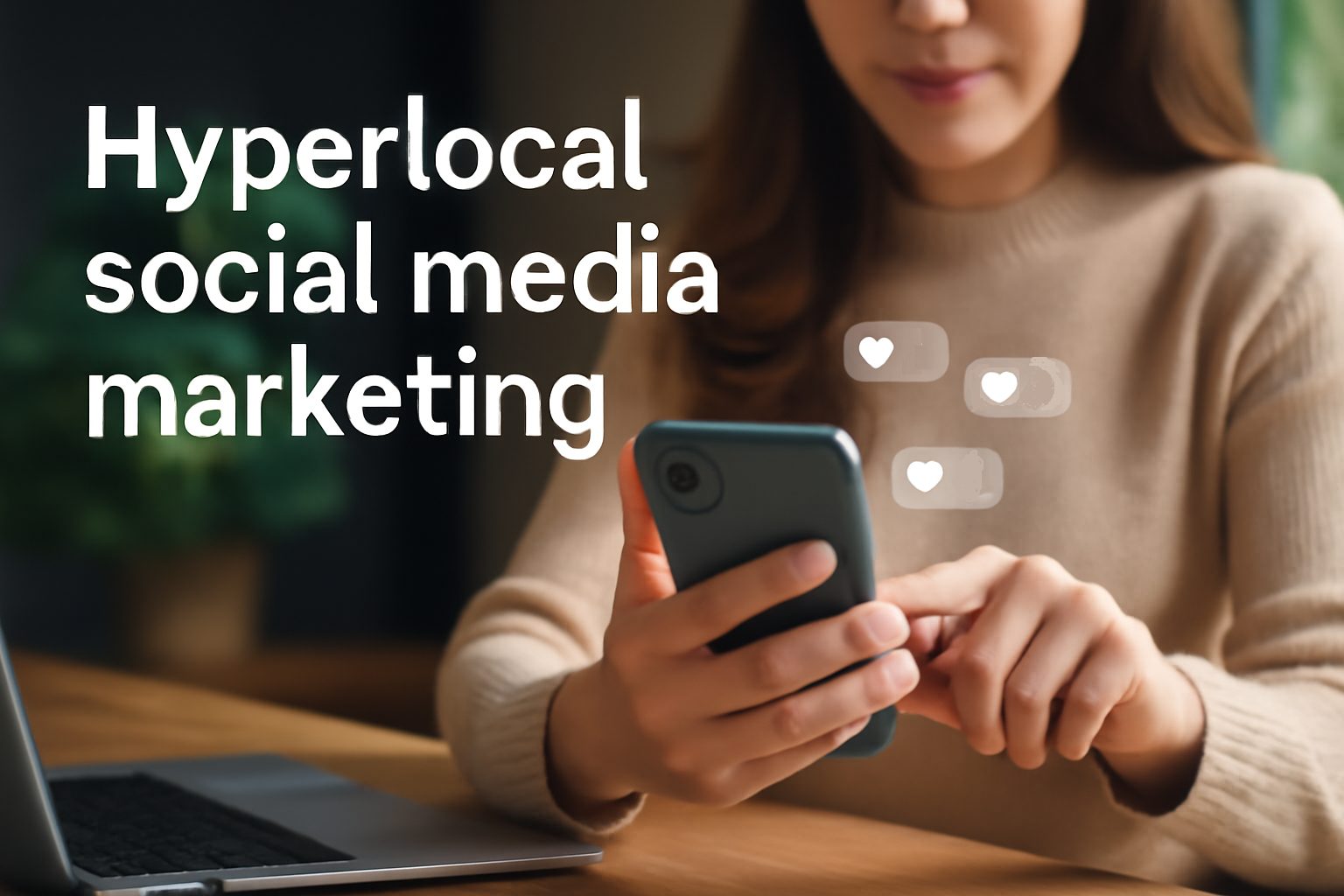
Social media has become an integral part of our lives, shaping how we connect, share information, and discover new things. For businesses, it’s a powerful tool for reaching potential customers, especially when using hyperlocal social media marketing strategies.
In a world overflowing with content, it’s important to make sure your message stands out and resonates with the right people – the ones in your geographic location.
But where can you find your people?
How to find your target audience on social media
To succeed in hyperlocal marketing campaigns, you need to understand your local audience inside and out.
- Who are they?
- What do they care about?
- Where do they spend their time online?
Each social media channel offers unique tools and features to help you answer these questions and connect with your ideal customers, ultimately increasing engagement rates.
Pro Tip:
For our comprehensive guide on audience targeting across various platforms, see our in-depth article here.
Finding your target audience for Instagram
Instagram is a visual storyteller’s platform, ideal for showing the unique character of your business location. Here’s how to find your niche:
- Location Tags: Switch to a Business account and focus your efforts on users who are physically located in your target area, whether it’s a city center or a small town.
- Interest Targeting: What are the local passions and hobbies? Target users who engage with content related to local sports teams, foodie events, or community festivals.
- Relevant Keywords: Use local hashtags and relevant keywords in your captions to reach users who are actively searching for or discussing topics related to your community.
Finding your target audience on Facebook
Facebook’s massive user base of 3 billion monthly active users provides a goldmine of demographic information for hyperlocal marketing campaigns. Here’s how to pinpoint your ideal customers:
-Location Targeting: Drill down to the exact neighborhoods or ZIP codes where your potential customers live. This laser focus ensures your ads are seen by the people most likely to visit your brick-and-mortar store.
-Demographics: Tap into Facebook’s extensive data on age, gender, education level, relationship status, and more. Craft your messaging to resonate with specific segments of your local community.
-Interests: Connect with users who have expressed interest in local businesses, community events, or topics relevant to your products or services. This increases the likelihood of your ads appearing in the feeds of people who are genuinely interested in what you offer.
-Facebook Groups: Join local groups where your target audience congregates. Share valuable content, answer questions, and actively participate in discussions. This builds credibility and trust within your community.
Finding your TikTok target audience
To find your TikTok target audience, follow these steps:
- Use TikTok Analytics: Switch to a Business account to access analytics. Check the Followers tab for details on age, gender, and geographical location.
- Hashtag Research: Use TikTok’s search bar to discover trending local hashtags. Look for hashtags popular in your geographical location to connect with nearby customers.
- Geo-Targeted Ads: TikTok now allows targeting specific regions, cities, and even zip codes in some areas. Set up hyperlocal campaigns in TikTok Ads Manager by choosing relevant locations.
Example from TikTok’s page:

4. Local Trends: Stay updated on local trends and engage with the community.
Hyperlocal marketing examples
Let’s look at some examples from some of the platforms we covered:
Hyperlocal Mobile Advertising Example:
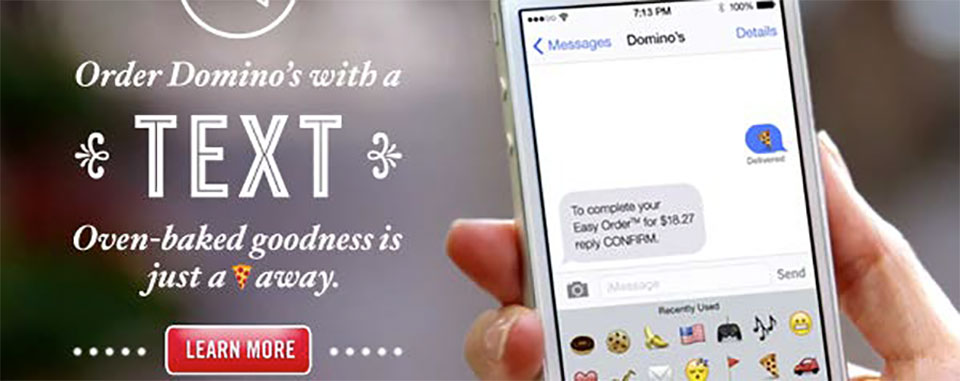
In 2012, Domino’s used geotargeting and text messages to boost conversion rates. They sent special promotions during major games and thunderstorms, engaging relevant audiences and increasing customer loyalty. This strategy effectively targeted customers based on their specific locations.
Facebook Example:
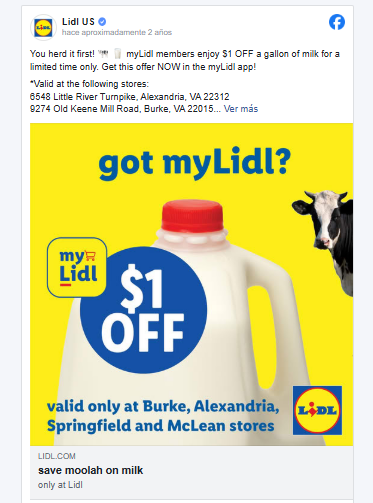
In 2023, Lidl shared location-specific coupons on Facebook, like discounts on milk, only valid at certain store locations. This strategy not only drove local traffic and a sense of community – but also increased engagement with their loyalty program members
Instagram Example

Warby Parker announced the opening of their new physical store on Instagram. They created a targeted campaign that included geotags and local hashtags to ensure that their announcement reached the local community, resulting in a successful launch with high local engagement
Tik Tok Example
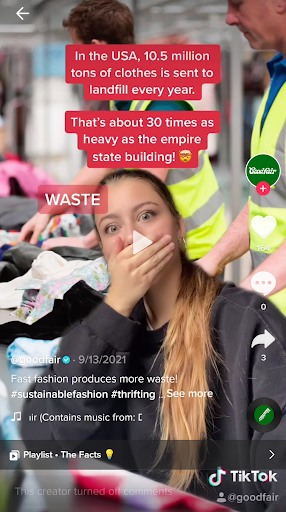
Goodfair, an online thrift shop, leveraged TikTok for a successful marketing campaign. They used user-generated content and in-feed ads to boost engagement and sales.
By focusing on behind-the-scenes videos and educational content about sustainable fashion, Goodfair managed to decrease its cost per click (CPC) by 15.6% and increase its click-through rate (CTR) by 87.2%.
While the campaign was broader, elements of it can be adapted to hyperlocal strategies by targeting content and ads to specific communities and regions.
Final hyperlocal marketing strategies
Here are some additional hyperlocal marketing strategies to consider:
- Customer Loyalty Programs: Offer rewards or discounts to customers who frequent your business. This can help you build customer loyalty and encourage repeat business.
- Hyperlocal Content Marketing: Create content that is specifically relevant to your local area. This could include blog posts about local events, social media posts highlighting local businesses, or videos showing local attractions.
- Mobile Marketing: Use SMS or push notifications to send targeted messages to customers who are in your area. This can be a great way to promote special offers or events.
- Optimize for Voice Search: With the rise of smart speakers, ensure your business is optimized for voice search queries like “near me” searches. This can help you capture more local traffic.
Ready to connect with your local community?
At Nomadic Advertising, we know how challenging it can be to make your message hit home with local customers. But we also know the incredible potential of getting it right.
If you’re ready to see what hyperlocal marketing can do for your business, let’s talk.
Reach out today for a free 30-minute consultation and let’s see how we can help you connect with your community like never before.
Key Takeaways:
- Hyperlocal marketing targets customers in a specific geographic area
- Tech like geofencing and beacons enable precise local ad delivery
- Optimized online presence and engaging local social media drive results
- Find local audiences with location data, keywords, and community involvement

